20 min read
Red Light Therapy at Home: Benefits, How-To, and Best Devices

Red light therapy at home is quickly ballooning into the biggest wellness trend of the decade and is now a centerpiece of anti-aging beauty routines for millions from all walks of life. The advent of easy-to-use, hand-held, single-investment red light therapy home devices democratized high-tier skincare. This meant that it was no longer only an exclusive privilege of the wealthy who can afford the investment (financially and schedule-wise) into professional light therapy.
Look, not all trends are worth pursuing; they only denote that something is popular, rather than efficient, and the novelty soon wears off. However, when it comes to red light therapy at home (or in a clinical professional setting), there is over half a century of research supporting red light efficacy in medicine and skincare. So, at-home LED light therapy works, provided you choose a high-quality device and actually use it.
If your social feed is slowly beginning to resemble a storyboard of Blade Runner with a bunch of glowing LEDs on a dark backdrop, it’s pretty safe to say you're interested in light therapy. Who wouldn’t want a non-invasive treatment using light wavelengths (mostly red and near-infrared light for anti-aging) to stimulate those sluggish cells, promote faster healing and regeneration, and boost collagen production? There is no pain, no recovery time, no drama. The “at-home” addition lets us know that you have been on the planet for long enough to be quite discerning about what’s worth wearing pants for (everything is better without pants).

But how exactly do you do red light therapy at home, and does at-home LED light therapy work as well as professional treatments? This guide will walk you through everything from choosing the best red light therapy mask and home devices to how often you should use these for the best red light therapy results, and we’ll also do some best picks of clinically proven devices that are actually worth your money.
What Is Red Light Therapy?
Every cell in our bodies has mitochondria, the organelles that create energy (ATP- adenosine triphosphate) by burning nutrients in the presence of oxygen. Once a bacterium living in symbiosis with other living cells, exchanging energy for food, mitochondria have long been assimilated into the living cell as its full-fledged member. The cell would die if mitochondria stopped producing energy for a minute.
The only cells that have opted out of this symbiotic relationship are the erythrocytes, red blood cells, which drop all of their organelles and a nucleus to maximize the room they have for oxygen they need to transport and to prevent the oxygen from getting nom-nomed during transport. If they had mitochondria, they would grab the precious oxygen and combust it with nutrients lying around. You’d get much less efficient transport, and we’ll not insult you by explaining how important oxygen is.
Back to the cells that do have some mitochondria. Energy is life, and the more efficient a cell is at producing energy, the better it works, repairs damage, heals, and gets more resilient to stress. But what happens as time inevitably ticks away on our lives is that skin cells, just like all other cells, start to get sluggish. We call it senescence (old age, for all intents and purposes here). The sluggish cells produce less energy, sometimes not even enough for basic functions, so they stop investing in fixing the damage and optimal function and more or less just switch to survival mode. The result we see on our aesthetic macro level is accumulation of damage in the form of fine lines and wrinkles, sagging due to the lack of collagen synthesis, and generally a dull, lifeless, tired complexion lacking that well-oxygenated and nourished glow. It’s aging, getting all up in our face, and it will happen eventually, no matter what you do and how well you take care of yourself. However, you can significantly slow it down with lifestyle and skincare choices, such as incorporating red light therapy into your routine at home.
The best way to think about light therapy is to understand that light IS energy and that the body knows how to utilize it, as we’ve coevolved with light. Different colors of light mean that these are different wavelengths, and some of these are therapeutic, serving as a sort of high-tech recharge for your skin cells. LED lights are an incoherent source of low-level light that boosts cellular energy, stimulates regeneration, and promotes healthier, firmer-looking skin. LED light therapy will not produce excess heat that can cause damage, as a laser (a coherent energy source) would when used with high power for cutting or cauterizing in medicine. Lasers can also be used in skincare if they are very low-level, but LEDs are safe for at-home use and just as effective when used consistently.
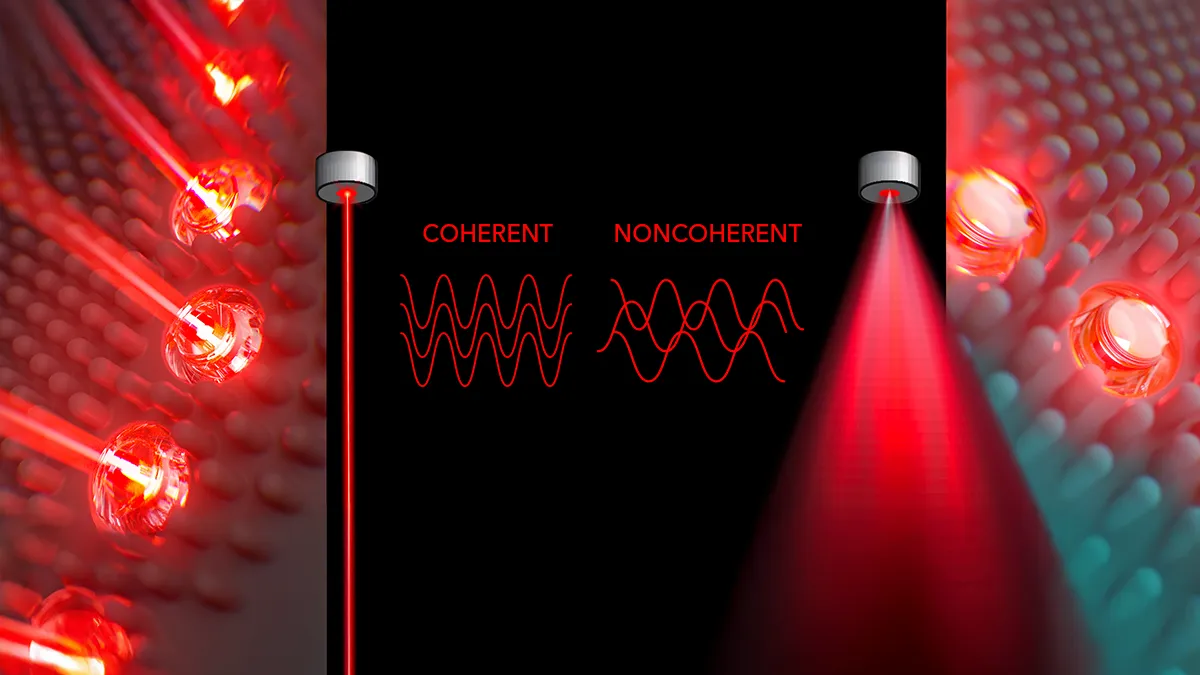
It would be a fairly solid guess that you’re interested mostly in red, NIR (near-infrared) light therapies due to their intense healing and anti-aging effects, which have made them the most popular wavelengths and the best choice for red light therapy at home. How do red and NIR LED light therapies differ in penetration depth and effects on the skin?
Red light
Red light wavelengths are usually used therapeutically in the proven range of 630–660nm, deeply interacting with the skin cell mitochondria, effectively giving cells an energetic push to an earlier point in time. Rejuvenating the power plant of the cell (mitochondria) rejuvenates the cell. Wavelengths also vary in terms of their ability to penetrate the skin and where they are most useful. Red light therapy is best for restoring the skin’s surface layers, helping smooth visible fine lines, improve skin tone and texture, and give your complexion that fresh glow, which makes you look well-rested and healthy.

Near-infrared (NIR) light
NIR penetrates deeper than red light and has a therapeutic skincare (and hair growth) range of 810-850 nm. This allows it to go past the surface alone and penetrate down to the muscle and connective tissue, making it equally readily used in medicine, physical therapy, and recovery as in skincare. Near-infrared (NIR) light is ideal for calming inflammation, easing tension, and supporting the skin’s structure from below. NIR will still be visible to the naked eye. At the same time, full infrared (IR) will not, and it will increase the inner temperature of the body, fighting pathogens and helping in deep tissue and organ recovery (which is why it is used in infrared saunas).
If you are truly serious about getting the strongest red light therapy at home, the market has produced a few high-tier devices that offer a therapeutic span of red and NIR light in a very easy-to-use device. This powerful duo is ideal for individuals with visible or advanced signs of aging, as it works both above and below the surface. A wrinkle is rarely just a surface thing, while a line can be superficial and temporary (for example, when you’re dehydrated after a night of heavy indulgence in the world’s most famous social lubricant).
When you regularly use red and NIR wavelengths, you’ll notice increased collagen production, reduced puffiness, faster healing, and visibly revitalized skin over time. We say “over time” because damage was not done in a day, and it cannot be fixed in one day. A biological process will need a time window for natural tissue replacement and regeneration. Keep in mind that cells die and are replaced by new ones all the time. You get a new face about every month, and how you choose to support the new cells really, really matters.
To summarize, the key benefits of red light therapy and NIR are:
- Boosting collagen production and skin elasticity
- Reducing inflammation and redness
- Improving wound healing and acne recovery
- Supporting circulation and lymphatic flow
- Easing muscle soreness and joint pain (more applicable to NIR)
And the best part is that now you can do all of this without a dermatologist appointment and without ever taking off your bunny slippers, as red light therapy home devices are taking an ever greater percentage of the beauty market.
Does Red Light Therapy at Home Work?
Yes, red light therapy at home works when used correctly. In-clinic red light therapy devices are typically more powerful, but the latest at-home LED masks, panels, and handheld devices have come a long way. They’re designed for safety and convenience while still delivering clinically relevant light intensities.
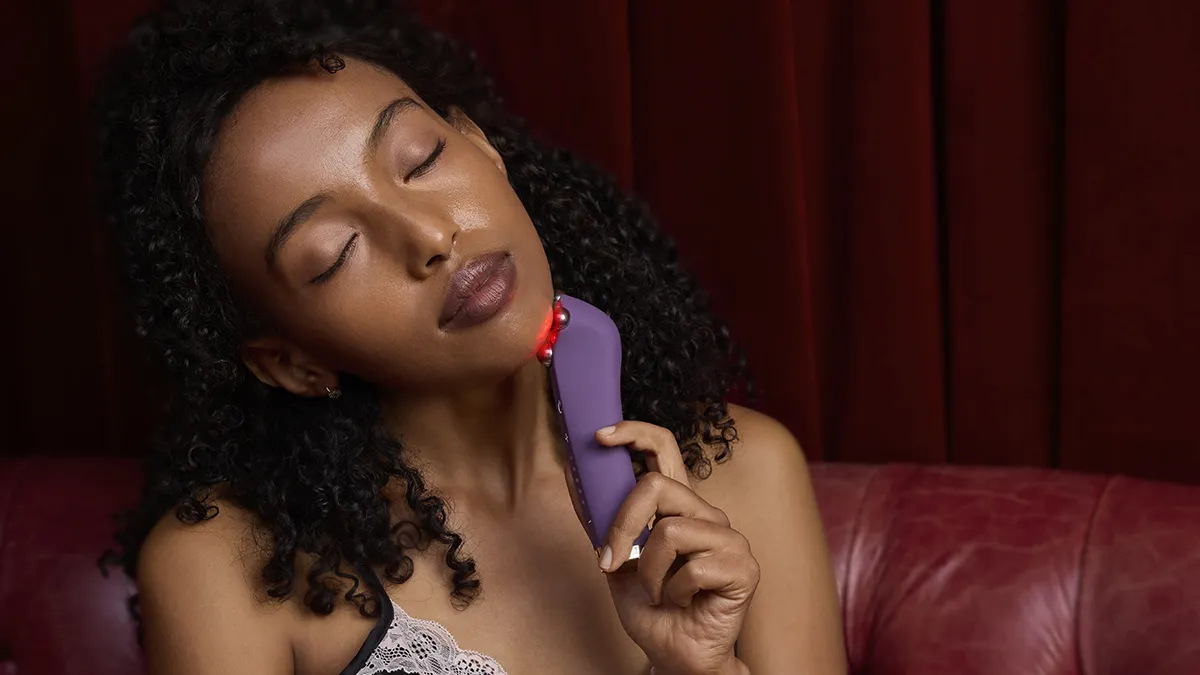
However, results depend on consistency. A few minutes once a week won’t do much — but 10–20 minutes of red light therapy at home, several times per week, can make a visible difference in tone, texture, and overall vitality of the skin.
If you’re wondering how often you should use LED light therapy at home, most experts suggest 3–5 times per week for the best results. The treatment is so safe, non-invasive, and simple that there is no reason not to, since the technology from high-end clinics has so successfully trickled down into everyday routines.
I mean, let’s not pretend that there is no difference between at-home devices and professional-grade machines. The pro machines may be bulkier and look less sleek, but they mostly deliver stronger irradiance (strength of light) and may cover a wider range of wavelengths. Since it is very unlikely you’ll have time for almost-daily clinical appointments, these stronger devices will get devices faster, but there is something to be said for the slow and steady pace of the red light therapy at home.
At-home devices were made for a gentle marathon rather than a guerrilla light attack, relying on cumulative benefits over days, months, and weeks. So, if you have somewhere to be in a week where you need to put your best foot forward, go for the pro option; if you just want to generally look younger and feel better, but abhor blades and needles. Choose red light therapy home devices and stick to the instructions like scripture. This is like exercise, no results if you don’t do it - over and over again.
Red light therapy at home works, but like fitness, the secret is consistency. Using your device several times a week can help reduce fine lines, even out skin tone and fade hyperpigmentation, and promote a healthy glow—all without appointments or downtime.
Choosing a Home Use Red Light Therapy Device
There are always so many options, sometimes annoyingly many, but the first step to choosing anything is to define what you really need. What problems do you need solved, and what needs satisfied? It’s no big deal if you choose wrong; you can always sell or pass on the one you have and get something else. It’s not like a husband, where choosing one means unchoosing all else. Heck, get them all (devices, not husbands). So what are your goals: is it glowing skin, muscle recovery, or mood support?
All LED therapy devices can have various effects and target all sorts of concerns, depending on the wavelengths they feature. If we’re talking about long-term investments, it would be best to look for a full-spectrum LED therapy device that can multitask rather than just offer one or two anti-aging wavelengths. You may need a wider range of capabilities, such as blue light for an acne breakout, orange light if your skin is looking damaged, like after prolonged sun exposure, or green LED for pigmentation issues.

Main types of red light therapy devices for home use
LED Face Masks – Whole face
Excellent choice for overachievers who love intense treatments but have no patience to participate actively in the treatment. Plus, they also need their hands free to keep crossing out stuff on their A-type to-do list during full-face coverage treatment. LED face masks will treat the entire face and are ideal for those who want a generally fresher and younger-looking complexion and have no specific grievance with a problem area.
We must make two honorary mentions, which target other areas that age more quickly than the rest of the body, such as the LED neck mask and the LED hand therapy mask.
Handheld Devices – Targeted Treatment
Compact and perfect for targeted treatments on small areas or spot treatments for a specific localized problem areas we want to address, like pronounced crow’s feet, laugh lines, or acne spots that make us look older and more run down than necessary. Handheld devices are a top choice for beginners or those short on time, as the targeted treatment usually lasts significantly less than a full-face treatment.

Red Light Panels - Full-Body Recovery
If you’re equally interested in general full-body wellbeing and mood stability as you are in skin health, then nothing even comes close to a red light panel, be it a single or double panel. Panels offer powerful, widespread coverage that allows you to treat the face, chest, back, quads, or stomach simultaneously, or in large sections, with a single device. LED light therapy quickly loses power the further the light gets from the skin surface, but in the case of a panel, this is compensated for with stronger irradiance, so you should always follow instructions on the proper distance from the panel and whether protective goggles are necessary. You will get skin benefits, of course, but more importantly, there will be a body-wide systemic effect, such as reduced inflammation and muscle recovery.
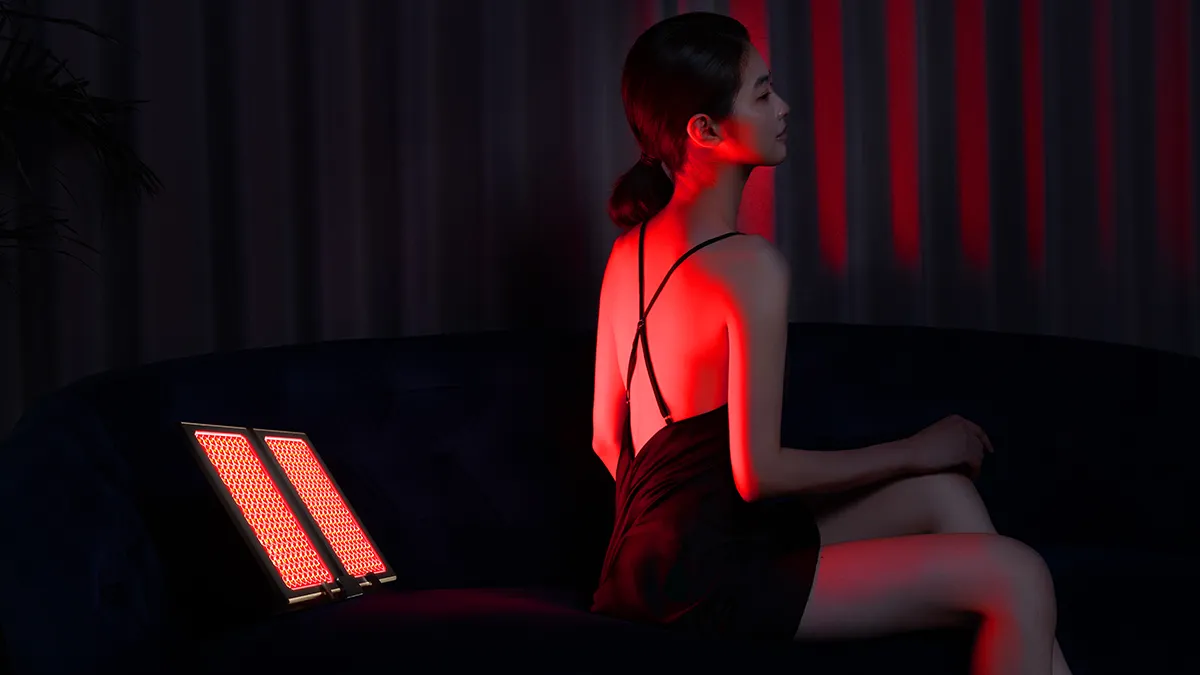
Checklist for a quality device
You can buy whatever you want. It’s your money and time out of your life exchanged for that money (unless you’re old money, in that case, congratulations, the jealousy is palpable). But keep in mind that quality red light therapy at-home devices don’t come cheap (if they do, you should already be suspicious). A little research beforehand can save you a lot of time, nerves, and potential skin damage from unverified items.
- Wavelength range: If you are primarily interested in anti-aging LED therapy, look for red light therapy at home devices in the 630–660nm red light range and near-infrared (NIR) lights between 810–850nm. This will give you the best of both worlds: surface-level skin rejuvenation and deeper tissue repair.
- Irradiance/power output: Look for 20–50 mW/cm² for red light therapy at home devices focusing on the face, neck, or sensitive areas such as the periocular (around the eye) area. You can go to 50–100 mW/cm² if you’re more concerned with joint and muscle recovery, and up to 200 mW/cm² for larger sources of LED light, such as red light panels, which are not placed directly on the skin. Some of the irradiance power will be dissipated and lost before the light hits the skin, so you’ll get exactly what you need on a larger area. Always follow the instructions that came with your device, as the manufacturer has taken the guesswork out of best practices for use.
- FDA clearance: Ensures the device is safe for home use and that its performance and efficacy have been reviewed by an overarching authority that has high standards in place to ensure that the market doesn’t get flooded by subpar and potentially dangerous devices.
- Treatment coverage: Full face? Décolleté? Stubborn lines in a few precision areas only? This we explained above. The best red light therapy at home device is not the same for all. It depends on what you need. LED masks are safe, cover the whole face, neck, or hands, while wands target specific areas. Red light panels can be used on the whole body for full-body wellbeing, rather than just aesthetic purposes.
- Low EMF output: All devices that use electricity emit electromagnetic fields (EMFs). Red light therapy at home is safe, but since you’re using a device daily (in addition to all the other devices in your life), look for low-EMF devices to keep things clean and healthy.
- Warranty & durability: A Quality device means it was built to last and not rapidly lose efficacy due to wear and tear of materials or shabby craftsmanship. It is made from resilient and ultra-hygienic materials, featuring electronic parts of the highest tier. You’ll know a high-quality product by a strong warranty coverage (2 years and up is a good sign) and responsive customer service. You’re not just buying tech—you’re buying trust.
So what you’re looking for here is power, safety, and convenience. No one wants to spend 15 minutes cleaning a device after just 5 minutes of use, or to have to charge it after every use, which can be inconvenient and complicate sticking to a non-invasive skincare (or LED haircare) routine.
Best At-Home Red Light Therapy Devices (Top Picks)
We’ll go through the best picks for LED face masks, hand-held devices, and wands, as well as some recommendations for red light panels, honoring all the items on our checklist above, and leading you directly to the official page.
LED therapy handheld devices and wands
UFO™ 3 Collection
- UFO™ 3 Anti-Aging LED Light Therapy Device
- UFO™ 3 LED Anti-Aging NIR Light Therapy Device
- UFO™ 3 mini Entry-Level LED Light Therapy Device
- UFO™ 3 go Travel-friendly LED Light Therapy Device
FAQ™ 100 Collection
- FAQ™ 101 RF & Red Light Wand For Face
- FAQ™ 102 RF, EMS & Red Light Anti-aging Wand For Face
- FAQ™ 103 Diamond-adorned RF, EMS & Red Light Wand
FAQ™ 400 Collection
- FAQ™ 401 Dual Microcurrent LED Toning Device
- FAQ™ 402 Dual Microcurrent Red LED Toning Device
- FAQ™ 411 Microcurrent Red LED Body Toning Device
FAQ™ 500 Collection
- FAQ™ 501 Full Spectrum Red Light Therapy
- FAQ™ 502 Full Spectrum Red Light & NIR Therapy

LED face and body masks
FAQ™ 200 Collection
- FAQ™ 201 Silicone LED Face Mask
- FAQ™ 202 Anti-aging Silicone LED Mask
- FAQ™ 202 plus LED face mask
- FAQ™ 211 Red Light Neck & Décolleté Mask
- FAQ™ 221 Anti-aging Red LED Hand Mask
LED therapy panels
FAQ™ LED Light Therapy Panels
- FAQ™ LED Panel (Single)
- FAQ™ Dual LED Panel
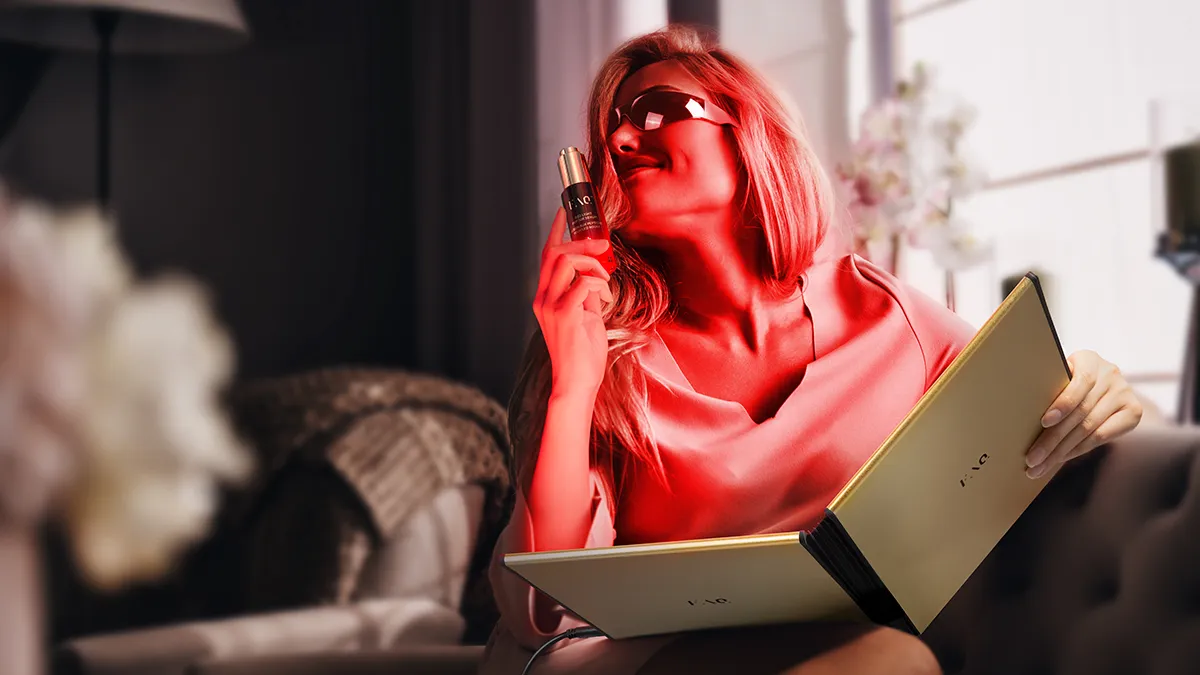
Honorary mention: Scalp care
FAQ™ 300 Collection
- FAQ™ 301 LED Hair Strengthening Scalp Massager
- FAQ™ 302 Laser & LED Hair Regrowth Scalp Massager
- LUNA™ 4 hair Red LED Light Scalp Massager
- FLIP™ play advanced LED light hairbrush
Pricing, Frequency, and Treatment Duration
We’ve established that at-home red light therapy really is more than just a beauty trend. It is a science-backed investment into skin health and full body wellness, offering results and not promises without the time, cost, or commitment of frequent clinic visits.
In-clinic treatments mostly cost $50-$150 per session, but can range from as low as $25 to as high as $300. Some derm offices and aesthetic clinics may offer discounted packages or bundles, as the nature of the treatment is that it needs consistency, and this may be something like 10 20-minute sessions for $219, or 20 for $400, with additional discounts for bigger bundles. But it is more likely you’ll pay for a basic plan of 12 sessions at around $50 each, totaling $600. If you’re going in for bundles for the whole body, you’ll easily end up with a bill of thousands of dollars, and aesthetic pursuits will not be covered by most insurances, so you’ll pay out of pocket.
At-home red light therapy devices range widely depending on size, power, coverage (face only vs full body), brand, and features. Here are some typical price points:
Smaller lamps or handheld LED wands for the face may cost as low as $25 for an entry-level device, but it’s more realistic to ballpark it anywhere between $150 -$500 if you want something that has been tested, is safe and reliable, and will last.
If you’re interested in some mid-sized panels which you’d like to use on the entire body in segments, the power and size choice will place you anywhere between $300 and $1,000, while premium full-body panels or “medical-grade” power panels will be available from about $1500 to $7,000+ (some even above $10,000) for large-coverage units. The latter are marketed as at-home devices, but could just as easily be part of an offer in a spa or clinic.
So, yes, we know that the initial investment for a good at-home device can seem I-faint-and-come-to-only-to-faint-again high, but unlike repeated cycles of clinic visits, it’s a one-time purchase that you can keep using for years. If you’re otherwise healthy and just want to look and feel better, an at-home device in the $150-$500 range may be a more cost-effective option for you than monthly clinic visits. If you have medical concerns like wounds, melanoma, skin illnesses, damaged areas, or photosensitivity, you should talk to a dermatologist or get a few professional treatments before you start using an at-home device willy-nilly.
But if I may add my two cents to the mix. As someone looking at mid-30s in a rearview mirror and with a rudely packed schedule, I love the convenience of at-home devices. Constantly having to make appointments for something is a deal breaker for me. Even a show you choose to watch next requires thinking about whether the commitment is worth it. I’d rather just go for a snip and tuck once and be done with it, dribbling in a pan all pumped up on painkillers, than add more complicated to-dos to my day. That is why I prefer to do something simple in a few minutes at home as opposed to an elaborate schedule-juggling dance to fit in appointments regularly.
In red light therapy, results are driven by consistency, not intensity. They are cumulative. So, I’d prefer not to have to leave the house if I can do three at-home treatments to get the results I’d get with one in-office session (I don’t know if this is the ratio; I made it up for the sake of this argument).
A session with an at-home red light therapy takes anywhere from just 2 minutes in devices where LEDs are not the main attraction, to 15-20 minutes for an LED mask or red light panel. These devices are designed to fit seamlessly into daily life and, except hand handheld ones, the rest will let you go about your business - scrolling, doing laundry, making dinner, or couchpotatoing.
How to Do Red Light Therapy at Home
This will be a straightforward, beginner-friendly run-through of the most important steps, which may vary depending on the device you choose. Still, either way, there are some non-negotiables like these:
- Start with clean skin. Always and for every treatment. No SPF, makeup, or heavy skincare clogging up those pores. Remove all the product from your face and do a gentle cleanse before you begin.
- Position the device as required in your device’s manual. Some, such as wands or LED face masks, will need skin contact, while red light panels will usually work best at a distance of 6–12 inches from your skin.
- Set your timer to the ideal time recommended by your device manufacturer (usually 10–20 minutes), or better yet, get a device with an integrated timer, and you can go full-on brain-free mode. The device will warn you when the treatment is done (flash, vibrate, or turn off).
- Many at-home devices will have no need for protective goggles due to in-built eye protection systems, but wear them if the instructions specify that you should. This will most likely be for more powerful red light panels.
Aftercare: Apply hydrating serums or barrier-supporting creams after treatment. The best case scenario is if your device has an official accompanying topical developed exclusively for the device, which will double as a boost to the treatment efficacy and as full aftercare.

The no-nos after red light therapy:
Right after red light therapy, our skin is more receptive and sensitive to actives from skincare, so don’t just put on whatever’s at hand.
Avoid exfoliants of any kind (mechanical and chemical), acids, or retinoids that can cause irritation. Keep it simple, hydrating, and protective to the barrier. The point is to get out of your own way and let the enhanced skin processes rev up and fix the damage without being hindered by detoxing or defending from inappropriate skincare. You can, of course, use exfoliants and retinoids later, but time your routine so that if one is used in the evening, the other is used in the morning, or vice versa.
Mistakes when using red light therapy at home
- Overdoing it by extending usage time. This won’t make results faster, but can, in extreme cases of overuse, lead to irritation and over-drying.
- Standing too close to the device that was designed to be used at a distance. Also qualifies as a sort of overdoing, as most people do it to get a “more intense treatment”. Cells have a point of diminishing returns. They’ll absorb what they need and will not take any more, so respect the distance.
- Skipping consistency and then cursing the device and the wasted time. Occasional use won’t make much difference. If you don’t plan to use it, don’t waste your money; we can tell you that with 100% accuracy. It’s like paying for a gym membership but never going. Those love handles are staying put.
- Ignoring your device’s safety instructions. The safety instructions are there for a reason, and even cotton balls have some, like “Do not swallow.” Follow all safety instructions, as you’re still dealing with a powerful technology, even if it has been adapted for at-home use.
And no, red light therapy doesn’t work through clothes — it needs direct contact with your skin to be effective. Infrared does work through layers of clothes, and that’s why you’ll feel the sun’s warmth even through your shirt. Sunlight encompasses all wavelengths simultaneously.
Conclusion
Red light therapy at home isn’t just another very Instagrammable moment that makes no difference in reality. It’s a rarely seen hybrid of those trendy rituals that’s actually science-backed, easy to use, and looks incredibly cool, raising your street cred. If only there were more things in this life that can give you results while you daydream in your bathrobe. There is just one catch (there always is) – you need to do it and stay consistent.
A few minutes several times a week can accumulate into large transformations and visibly fresher and younger-looking skin as your mitochondria throw a mini rave in cells, pumping out energy like you’re 15 again. You’ll notice gradual improvements, including a decrease in puffiness, an increased healthy glow, and improved skin texture. You’ll look like the you that you knew and loved some years ago, well rested, perky, and line-free.
Sure, in-office treatments are usually stronger and supervised by professionals in scrubs. But for the long game, at-home LED therapy is the skincare equivalent of compound interest - small, consistent deposits that pay off beautifully over time. So, mask, wand, or full-body panel, doesn’t matter. The rules are simple: do your research, compare specs, choose wisely, follow directions, and keep showing up. Don’t rush the process – you’re not fighting time here, you’re outsmarting it, using it for recovery instead of deterioration.
And remember: good light is like good company — the longer you spend in it, the better you look and feel. We hope you’ve found some useful information and have a clearer picture of what a perfect red light therapy at-home device would be for your needs. Stay cool, shine bright, stay curious, and enjoy living in your beautiful skin.
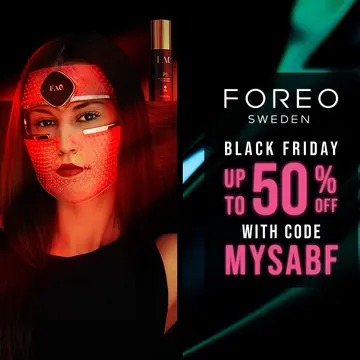



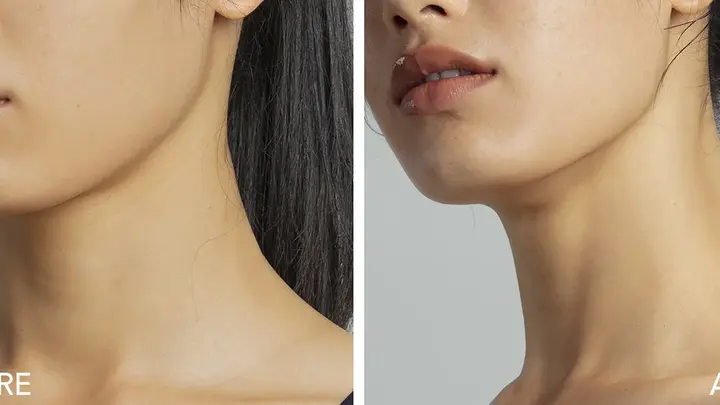



Leave a comment